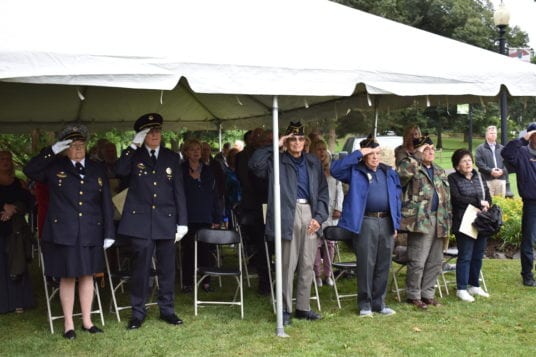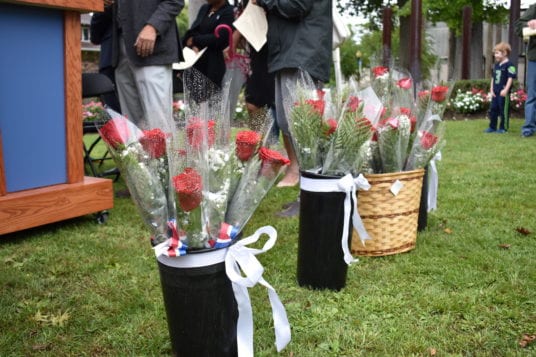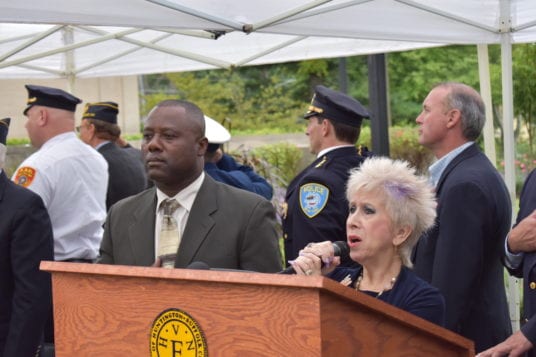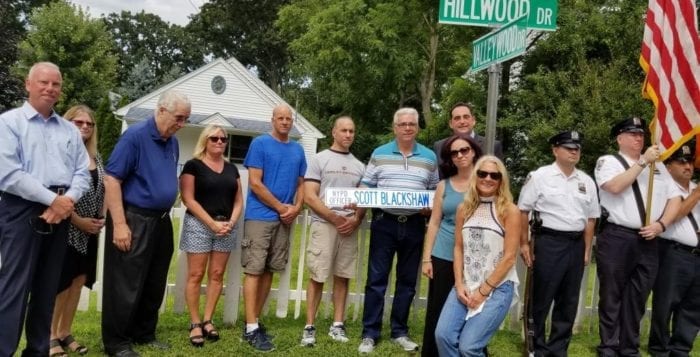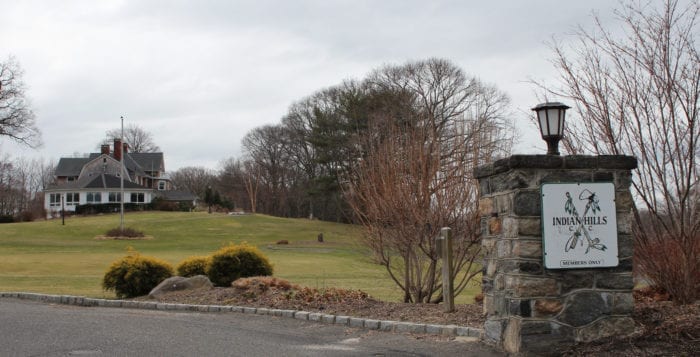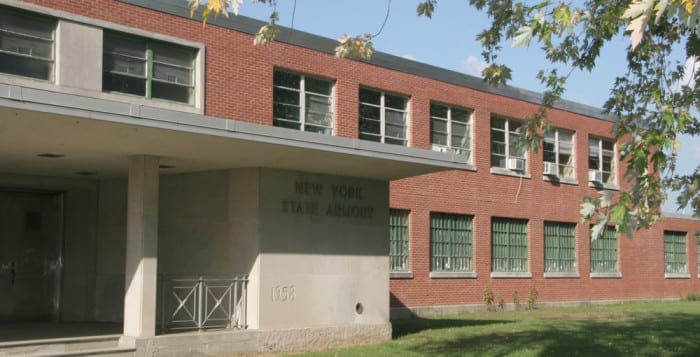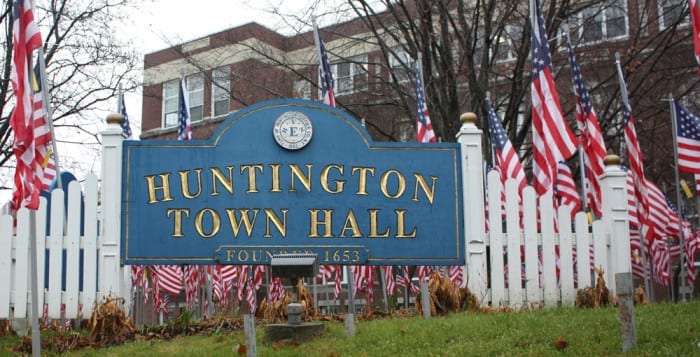Town of Huntington officials have agreed to rezone a “historic hallowed” parcel of Huntington Village turned “eyesore,” where Founding Father George Washington once stopped for dinner, after three years of extensive debate.
The town board voted 4 to 1 to allow for rezoning of the corner lot at the intersection of Park Avenue and Route 25A/Main Street from R-15 Residential District to C-1 Office Residence District to make way for a medical office building. Part of the site was formerly home to Platt’s Tavern, one of the earliest buildings in Huntington. Councilwoman Joan Cergol (D) was the sole vote against the rezoning.
“I believe we have an opportunity and responsibility to re-create this iconic corner in a manner that reflects and respects the historic district’s spirit and guidelines.”
— Joan Cergol
“I believe we have an opportunity and responsibility to re-create this iconic corner in a manner that reflects and respects the historic district’s spirit and guidelines,” Cergol said. “I am sorry to say I do not see that embodied in the current proposal.”
The proposed plans, put forth by developer Dominick Mavellia in 2014, would replace an abandoned gasoline service station/automotive repair shop, a deli and a vehicle storage yard with a 10,000-square-foot medical building.
The project is located within both the Old Town Green National Historic District and the Old Huntington Green Town Historic District, which contain some of Huntington’s earliest homes.
Paul Warburgh, president of the Old Huntington Green Inc. has previously voiced his opposition to the change of zoning, most recently at the Aug. 7 town board meeting. On Sept. 20, he asked town officials to table the vote and consider something different.
“I’d like to suggest some amendments to the changes to honor the historic site that exists there,” Warburgh said. “This will all then comply with the historic district law when you talk about scale and style.”
Warburgh asked the town board to put a conditional approval on the rezoning that the developer be required to construct two buildings totaling no more than 6,000 square feet and no more than 30 feet in height in order to fall within the standards of the historic district.
Cergol said she reached out to the developer herself earlier this year to see if he would consider building two smaller buildings instead of the 10,000-square-foot office. She cited Sunny Pond Farm on Park Avenue as an example of redevelopment that preserved open space, historic structures, blended into the historic district and has been economically successful.
“Right now on this corner is an ugly, abandoned gas station. This is the first step of beautifying that area.”
— Chad Lupinacci
Cergol asked her fellow council members prior to the rezoning vote if any were willing to postpone the decision to consider Warburgh’s request for special conditions. When no one was willing to open the matter to discussion, more residents asked if they still had an opportunity to speak.
Councilman Ed Smythe (R) said as the property is within the Old Huntington Green Historic District, the developer’s specific site plans will have to come back before the town board in order to receive a building permit. These plans will need to contain specific details on the architectural style of the building, according Smythe, as well as the building’s proposed elevation.
“Right now on this corner is an ugly, abandoned gas station,” Supervisor Chad Lupinacci (R) said. “This is the first step of beautifying that area.”
Lupinacci called the corner’s current buildings “an eyesore” and said in the future he hopes the town will install a historic plaque commemorating Washington’s visit on the site in addition to the brief sign already there.





